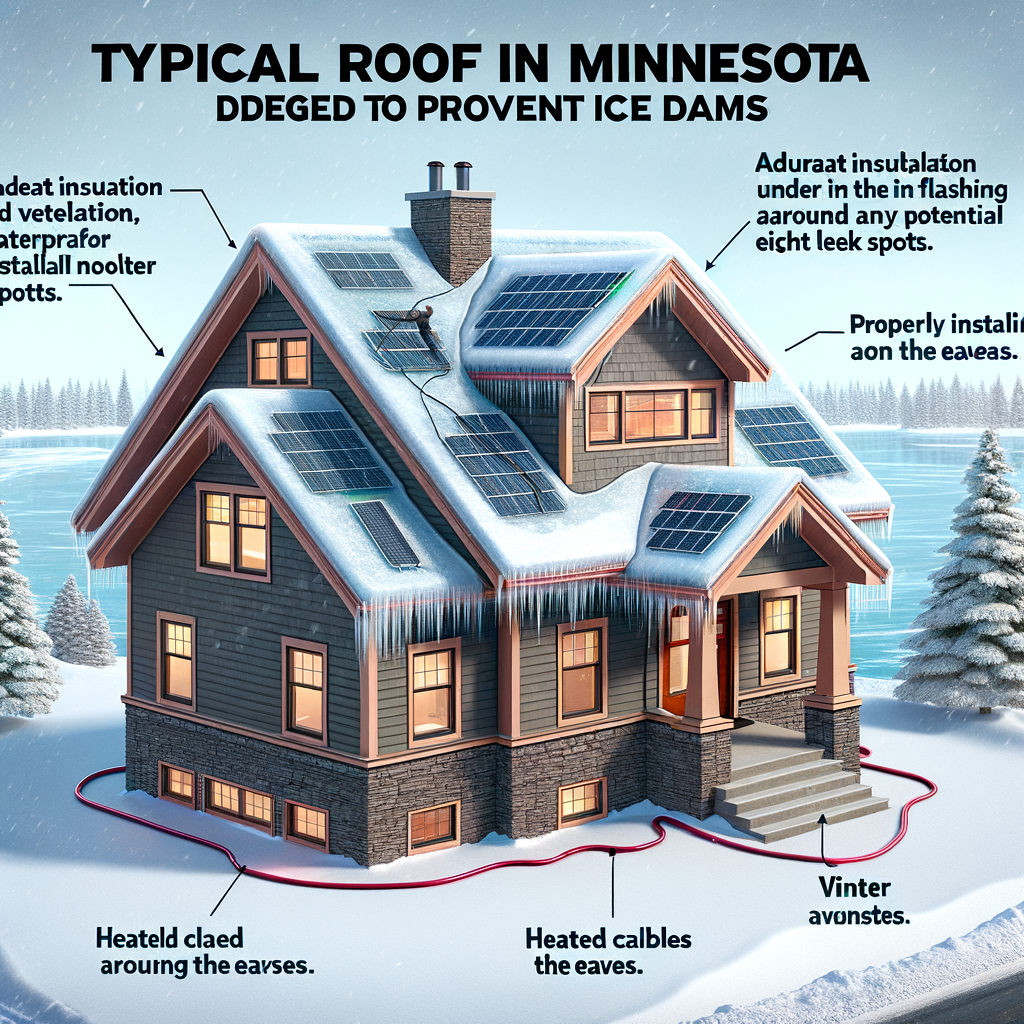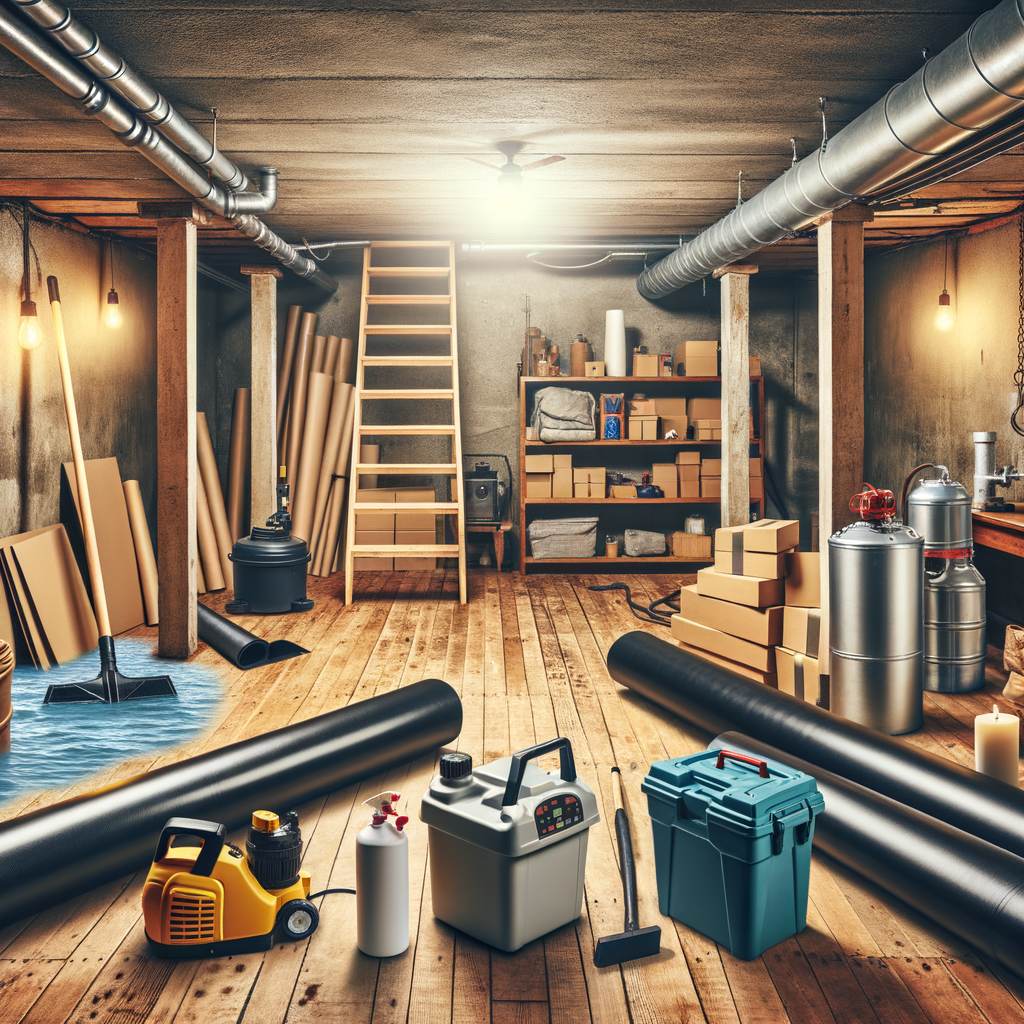Tackling Ice Dams Head-On: The Minnesotan Way
The onset of winter in Minnesota heralds the beauty of snowy landscapes but also brings forth a common adversary for homeowners: ice dams. These icy build-ups can seem as innocuous as winter’s natural decor, yet they harbor the potential to inflict severe damage on your abode. It’s not just the matter of obstructed gutters; ice dams can lead to costly repairs stemming from water damage to roofs and inner walls. As temperatures fluctuate, the snow atop your house melts unevenly, inviting these unwanted icy guests to your eaves and edges. Taking steps towards prevention is not just advisable; it’s imperative for the longevity and safety of your Minnesota home.
Minnesota Ice Dam Prevention Roofing: Your Proactive Game Plan
Preventing ice dams begins with understanding their formation. Picture your home’s roof as the battleground where heat loss meets freezing conditions, giving rise to these fixtures of ice. It’s this interplay between a warm attic space and the cold Minnesota air that sets the stage for ice dams. Ensuring that your attic is well-ventilated and your roof properly insulated shields your home from this yearly invasion. But knowledge alone won’t safeguard your roof; you need to arm yourself with the right strategies and materials to combat these icy formations effectively.
Concerns about ice dams are not just about immediate damage; they hint at larger, perhaps unseen, flaws in home maintenance. Addressing these issues is crucial, not just as a quick fix but as a fundamental enhancement of your home’s resilience. As the winter progresses, vigilant homeowners should ponder: what steps can I take today to prevent headache and heartache tomorrow? Implementing tried-and-tested ice dam prevention techniques is more than a seasonal task—it’s an investment in the health and value of your property. By reading on, you are taking that crucial first step in protecting your home from the grip of winter’s icy touch.
Deep Dive into Ice Dam Prevention Tactics
One of the hallmark strategies to prevent ice dam formation is improving attic insulation. It’s all about creating a uniform temperature across your roof, which stymies the conditions ice dams need to form. By reinforcing your insulation, you’re not just dodging ice dams, but also enhancing energy efficiency – a win for both your wallet and your peace of mind. This preventive measure is particularly crucial in homes older than a decade, where insulation tends to be less effective. Remember, the upfront cost of upgrading your insulation will likely pale in comparison to the expense of repairing water damage from ice dams.
Proactive Maintenance: Key to Long-Term Roof Health
Ensuring that your home is prepared long before the snow falls is another vital part of the ice dam prevention equation. Monitoring your roof’s health throughout the year, particularly before the Minnesota winter sets in, enables early detection and rectification of vulnerabilities that could exacerbate ice damming. Regular roof maintenance not only nips potential problems in the bud but also lengthens the lifespan of your roofing materials. Such conscientiousness will also stand you in good stead with your insurance company, demonstrating diligent homeownership. Take the time today to schedule a roof inspection and guarantee your home’s readiness for winter.
Technological Aids in Combating Ice
In our modern era, technology provides us with additional tools to combat the tough Minnesota winters. Heat cables along the roof’s edge offer a targeted approach to melting snow, preventing ice dams before they can take hold. However, it’s crucial to install these cables correctly; improper installation can lead to a false sense of security and the potential for even greater damage. Consulting with experts in roofing solutions ensures that any high-tech measures are implemented safely and effectively. Trust in this technology as part of your arsenal against the ice, but remember its role as a supplement to rather than a substitute for comprehensive roof care.
Sealing the Deal Against Ice Dams
With the understanding you’ve gained about ice dams, it’s time to take action and protect your home. Sealing gaps that allow heat to escape is a significant step toward preventing dams from forming. It’s a detailed task that involves inspecting your home for air leaks, from the attic to the basement, ensuring warmth stays where it’s needed most. Staying vigilant about these potential vulnerabilities can dramatically reduce the chances of ice dam formation. Take comfort in knowing that every precaution you take strengthens your defenses against the harshest of winters.
Identifying Vulnerabilities Early
Prompt attention to signs of ice dam formation can save you from extensive repair costs and the hassle of long-term damage. Watch for icicles along the edge of your roof and gutters, as they can be a telltale indicator of an underlying issue. If you notice any telltale signs of ice damming, don’t wait—take action immediately. Consult with professionals who can give you an honest assessment and propose effective solutions. Remember, the sooner you address these issues, the better you protect your home.
Final Thoughts on Navigating Minnesota’s Winters
As we conclude this guide, remember that prevention is always better than cure, especially when it comes to protecting your home against Minnesota’s winter challenges. By being proactive, staying informed, and taking decisive action, you can ensure that your roof remains in top condition, year after year. For those seeking professional assistance and expertise in ice dam prevention, Evolve Construction stands ready to offer their extensive experience and dedicated service. Take this moment to solidify your action plan for ice dam prevention. With the right measures in place, you can enjoy the winter season with peace of mind, knowing your home is secure.
Expert Advice on Ice Dam Prevention
Tip 1:
Ensure your attic is well-insulated to prevent heat from escaping through the roof and causing snow to melt and refreeze at the edges, leading to ice dams. Periodic inspections and maintenance can save costly repairs down the line.
Tip 2:
Installing heat cables along the edges of your roof can provide targeted warming that prevents ice from forming. It’s a proactive measure that, when installed correctly, can offer season-long protection.
Tip 3:
Ventilate your attic space properly to maintain a consistent roof temperature. Adequate ventilation helps reduce the chances of uneven snow melting and refreezing which is the root cause of ice damming.
Tip 4:
Regularly clear snow from your roof using a roof rake after heavy snowfalls. This preventive action can greatly minimize the risk of ice dam formation, which is essential in maintaining the integrity of your roof structure.
Tip 5:
Seal any gaps in your roof that allow warm air to escape from your home. Even minor gaps can lead to significant heat loss and contribute to the problem of ice dams, making this one of the most effective preventative measures.
Your Ice Dam Inquiries Answered
What causes ice dams to form specifically in Minnesota?
Minnesota’s unique climate, with its cold and snowy winters, creates conditions that allow snow to melt and refreeze at roof edges, forming ice dams. This cycle is exacerbated by heat loss from homes, which unevenly warms the roof surface.
How can I tell if my roof is at risk for ice dams?
If you see large icicles forming on the edge of the roof or gutters, or ice forming on the siding or around the exterior of your home’s foundation, these can be indicators of ice dams forming.
Are there any immediate steps I can take to prevent ice damming?
Removing snow from your roof with a roof rake after heavy snowfall and ensuring that your attic is properly insulated are immediate preventative steps you can take.
Will installing heat cables permanently solve my ice dam issues?
While heat cables can help prevent ice dams by melting snow and ice, they should be used as part of a broader ice dam prevention strategy that includes adequate insulation and ventilation.
Can ice dams cause long-term damage to my home?
Yes, if left unaddressed, ice dams can lead to water intrusion, which can rot your roof’s structure, damage insulation, cause mold growth, and create other costly issues in your home.




